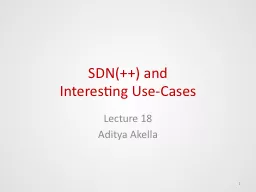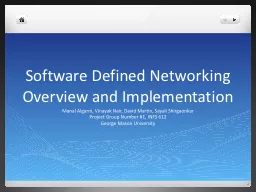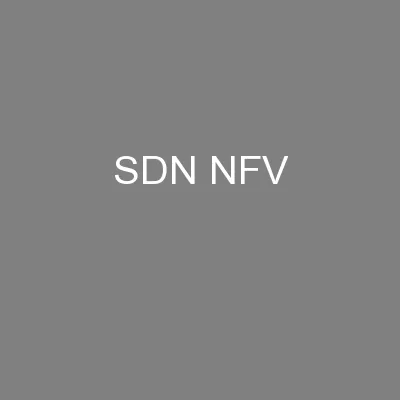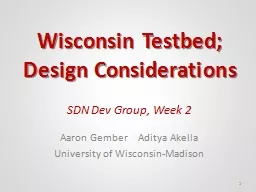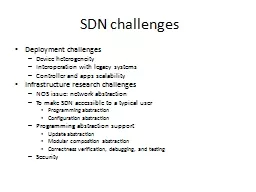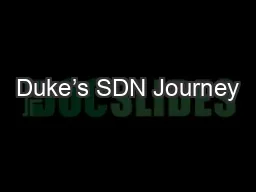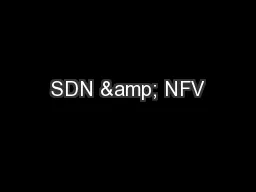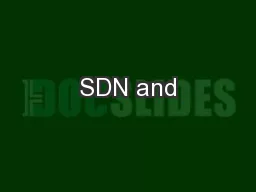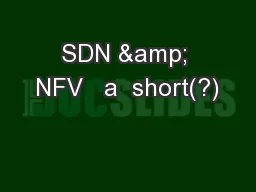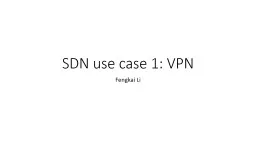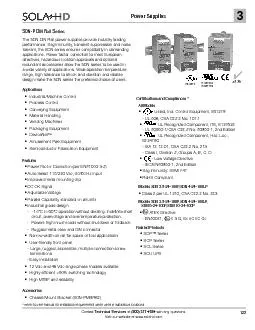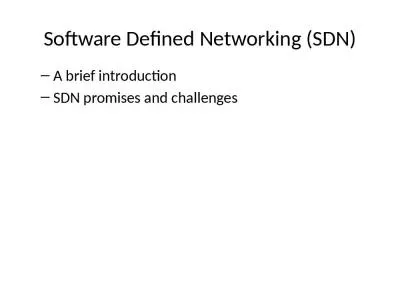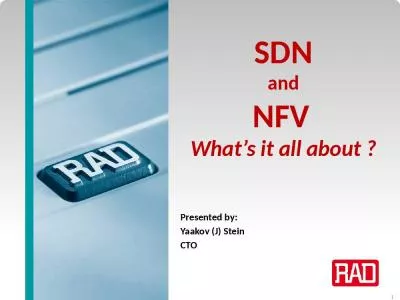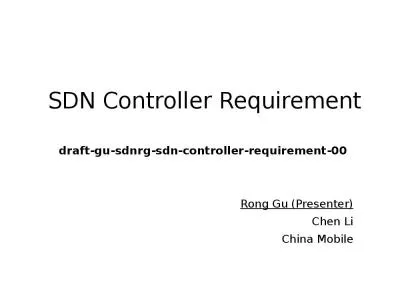PPT-SDN(++) and
Author : alida-meadow | Published Date : 2016-05-07
Interesting UseCases Lecture 18 Aditya Akella 1 Two Parts SDN for L3L7 services What is different Why cant we use SDN OpenFlow as is New use cases Live Network Migration
Presentation Embed Code
Download Presentation
Download Presentation The PPT/PDF document "SDN(++) and" is the property of its rightful owner. Permission is granted to download and print the materials on this website for personal, non-commercial use only, and to display it on your personal computer provided you do not modify the materials and that you retain all copyright notices contained in the materials. By downloading content from our website, you accept the terms of this agreement.
SDN(++) and: Transcript
Download Rules Of Document
"SDN(++) and"The content belongs to its owner. You may download and print it for personal use, without modification, and keep all copyright notices. By downloading, you agree to these terms.
Related Documents

